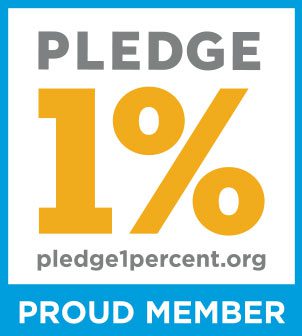The Best Strategy You’re Probably Not Using
Your first degree network is the one that brings you the most success when starting any business venture. Striving to find donors for nonprofits is no exception.
People do business with people they like, know, and trust. Some of them will donate to your cause because it’s your cause. Others can introduce you to foundations that offer grants to specific organizations if it’s a good fit. Either way, the people you already have relationships with are the ones who know you are and what you’re capable of achieving.
Contacting your first degree network will provide you with a substantial ROI and the launchpad you need to make your nonprofit successful. Here’s how:
Compile Your List
Jot down a list of people who like or could be interested in contributing to your cause, whether they’re donating revenue, time, or offering their connections. Maximize your impact by getting your partner, team, or board of directors to compile these lists.
Here are a few categories of people you should consider:
Networking Groups
Are you a BNI chapter, a chamber or commerce, a rotary club, or a similar networking community? These organizations help business owners and entrepreneurs make connections, share referrals, and grow their businesses. These groups have a variety of talents and connections, making them a great place to start.
Community Organizations
Churches, PTAs, and other nonprofits can be treasure troves of connections. Members of these organizations are already familiar with fundraising and philanthropy, making them excellent candidates for potential donors.
Frequent Donors for Nonprofits/Connections Involved in Other Nonprofits
These people often seek new causes to invest in. Some of them may even run or be part of foundations that give grant money to specific causes. These people can get you a foot in the door. They can also suggest which organizations you should send grant applications to, and which ones you shouldn’t. That information alone is a huge time saver.
LinkedIn and Facebook Connections
Creating pages on these social media sites and posting regular content about your nonprofit can attract the attention of mutual friends. Scroll through your LinkedIn “connects” and Facebook “friends” lists to identify potential leads. If you’re well-versed in Instagram, TikTok, or Twitter, use these platforms too.
Friends and Family
Don’t hesitate to ask the people closest to you for help. If it’s an important cause to you, it may also be an important cause to them. Also, these are the people most likely to invest in you.
Do Your Research
Next, gather any relevant information about your prospects, including:
- Personal and professional history
- What causes are important to them
- Giving capacity
- Potential connections to other donors or organizations
Figure out who you want to reach out to during your first wave of interactions, your second, etc. If you discover that a few of your connections aren’t a good fit, put them at the bottom of your list, or leave them off altogether.
Connect Your Connections
Further, organize your list into three separate categories:
- People you hope will donate directly,
- People who are connected to others you want to contact, or
- Both
Another effective way to organize these contacts is through relationship mapping. A relationship map is a literal map of the relationships between individuals and organizations. These maps show the connections (or lack thereof) between potential stakeholders for your nonprofit.
If you’re collaborating during this process, meet with your partner, team, or board of directors and go through the names on your list or map. If they’re also generating lists or maps, go through theirs, and cross off redundant names. Next, decide who should reach out to whom based on the relationships they have with you or the other members of your organization.
By now, you should have:
- A complete list of people or organizations you want to contact.
- A few helpful bullet points of information about each person or organization, including whether you’ll ask them to donate directly, to connect you to another resource, or both.
- Who will contact them.
Prepare Your Email or Call Script
Depending on relationship dynamics, some of these calls will be a little less formal. Still, it helps to have a script prepared for your initial point of contact.
Your script should:
- Introduce yourself and what you do
- Explain why you’re reaching out to them (because they donated to or know ________).
- Briefly talk about your nonprofit, including the name, who it supports, and how
- Include your ask
- End with a call to action
Your script may evolve over time based on the interactions you have with your contacts.
Here are a few cold call script templates to get you started.
Cultivate Your Donors for Nonprofits
Once introductions have been made, follow up with your prospects and propose scheduling a meeting so you can start building relationships. Prepare for these meetings by knowing what you want to ask and how they can help.
Now that you know how to cultivate donors for nonprofits, you can start strong and make a real impact. For more helpful information on fundraising or digital marketing strategies, send us a message.



0 Comments